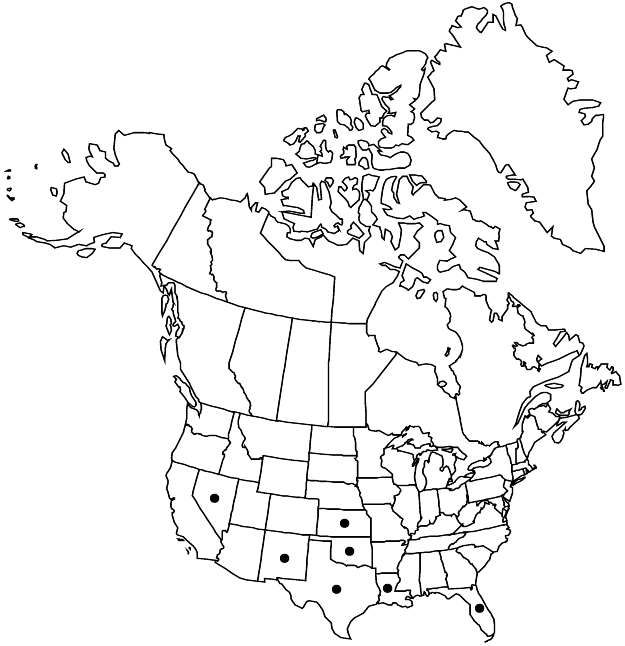Samolus ebracteatus
in A. von Humboldt et al., Nov. Gen. Sp. 2(fol.): plate 129. 1817.
2(fol.): 181.
2(qto.): 223. 1818 ,.
Plants bright-green or glaucous, not stoloniferous, 1.5–6 dm. Stems erect or ascending. Leaves usually crowded near plant base, sessile or petiolate; blade spatulate, 2.5–16 cm, base decurrent, attenuate to cuneate, apex rounded to obtuse, sometimes apiculate. Inflorescences terminal, racemose, pedunculate; peduncle 5–10 cm, frequently longer than stem. Pedicels ascending, ebracteate, 1.5–20 mm, glabrous or stipitate-glandular. Flowers: calyx 2–3 mm, lobes triangular-ovate to triangular-lanceolate, equaling or longer than tube, apex acute, glandular at least near base; corolla pink or whitish, 3–7.5 mm, lobes suborbiculate to broadly cuneate, shorter than tube, base with glandular tuft, apex rounded to truncate, often noticeably erose; staminodes absent. Capsules 3–4 mm.
Phenology: Flowering spring–fall.
Habitat: Moist to wet sites, dunes, coastal strands, salt marshes
Elevation: 0-1200 m
Distribution

Fla., Kans., La., Nev., N.Mex., Okla., Tex., Mexico, West Indies, Central America.
Discussion
J. Henrickson (1983) proposed five varieties of Samolus ebracteatus based on flower size and nature of the pedicel glands. He indicated that these merely represented the extremes of diversity found in this taxon, with much overlap in expressions of the characters, especially north of Mexico.